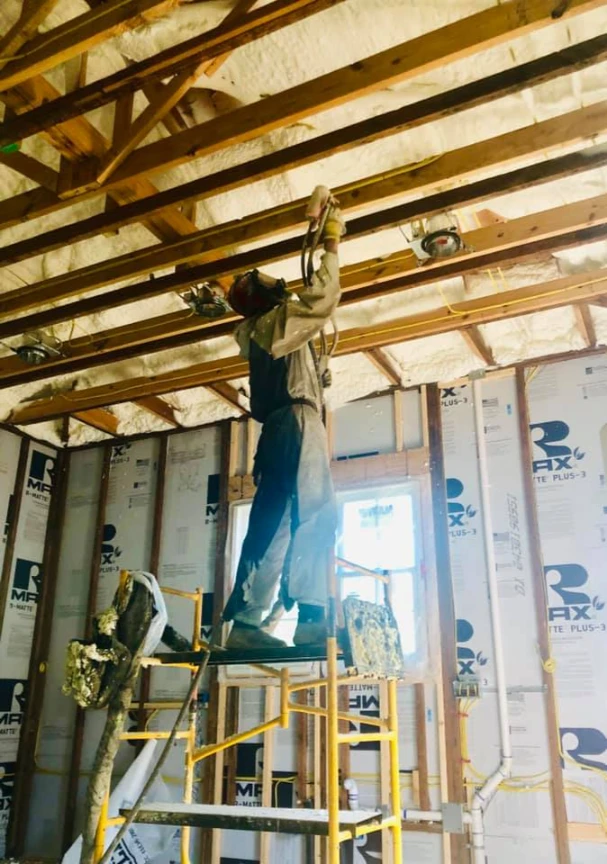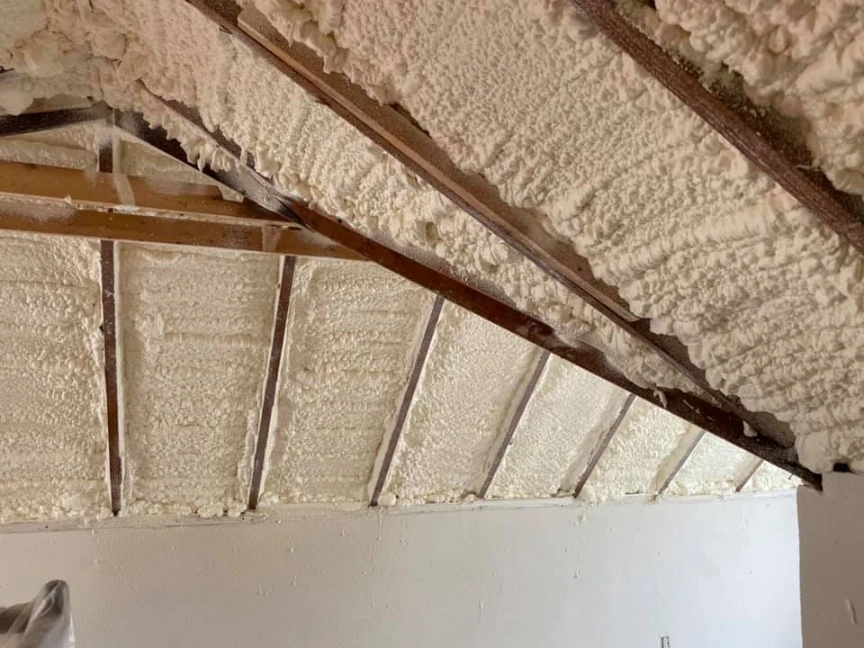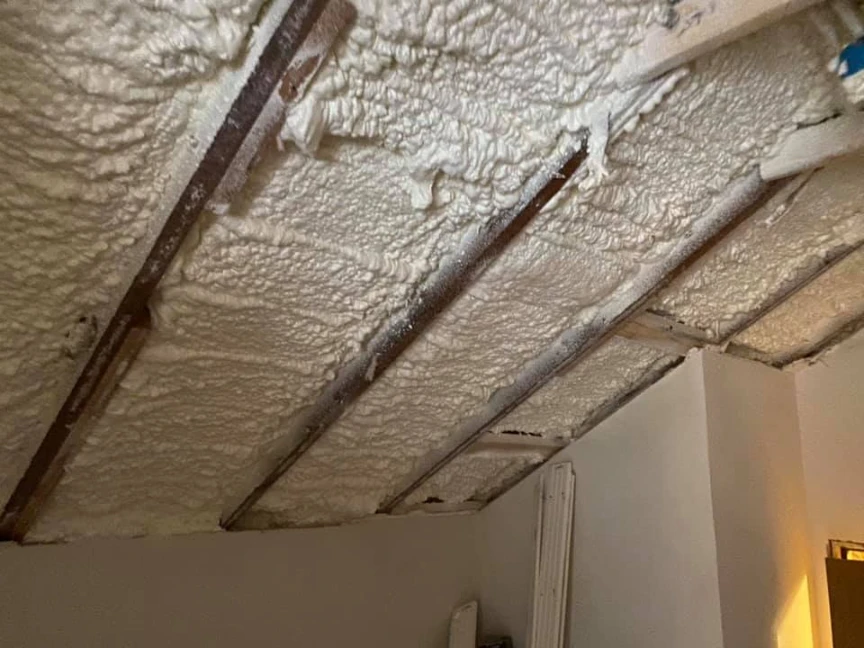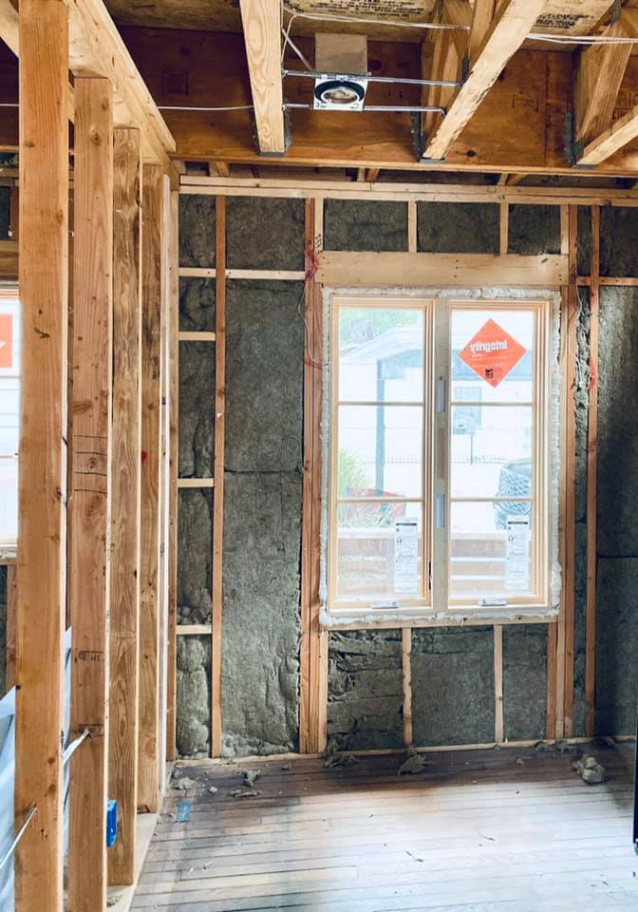Residential spray foam insulation is a highly effective tool for pest control because it creates a solid, seamless, and rigid barrier. When professionally applied, the foam expands to fill every crack, gap, and crevice in a building’s structure, effectively sealing off the common entry points that insects and rodents use to get inside. Unlike traditional insulation materials, which can be easily torn apart or moved, cured closed-cell spray foam hardens into a dense plastic that pests cannot readily chew through or push aside. This air-sealing quality eliminates the tiny highways pests rely on to travel through walls, attics, and crawl spaces.
This article provides a detailed explanation of how spray foam insulation works as a physical pest barrier. The information presented here is based on extensive field experience in sealing homes and observing how different materials perform against pest intrusion. You will learn about the specific properties of spray foam that deter pests, how it compares to other insulation types, and what to consider before using it for pest control in your home.
The Mechanics of Pest Entry and How Spray Foam Creates a Barrier
Pests don’t need much space to enter a home. Many insects can slip through cracks as small as 1/16 of an inch, while mice can squeeze through a hole the size of a dime. The National Pest Management Association highlights that pests often get in through gaps around utility pipes, cracks in the foundation, and openings where different building materials meet. These vulnerabilities are common in nearly every home and provide pests with easy access to shelter, warmth, and food.
Spray polyurethane foam (SPF) directly addresses this problem by sealing the building envelope. During application, the foam is sprayed as a liquid that expands up to 100 times its original volume before it cures. This expansion process allows the material to conform perfectly to any shape, filling even the most irregular and hard-to-reach cavities.
Once cured, closed-cell spray foam becomes a rigid solid. It adheres strongly to wood, concrete, and steel, creating a continuous barrier that is integrated with the structure itself. This leaves no gaps for pests to exploit. Rodents that try to gnaw through it find a material with no nutritional value that is difficult to penetrate, encouraging them to seek an easier entry point elsewhere.
Comparing Insulation Types for Pest Resistance
Not all insulation materials offer the same level of protection against pests. Some can, unfortunately, become ideal nesting grounds, while others provide a more formidable defense. The table below compares the pest resistance qualities of common insulation types.
| Feature | Closed-Cell Spray Foam | Fiberglass Batts | Cellulose |
|---|---|---|---|
| Physical Barrier | Excellent. Cures into a hard, rigid plastic that seals all gaps. | Poor. Easily torn, compressed, or moved aside by pests. | Fair. Densely packed, but can be tunneled through over time. |
| Nesting Potential | Very Low. The material is solid and offers no space for nesting. | High. Pests frequently pull apart fiberglass to create nests. | Moderate. Can be used for nesting, though the borate treatment may deter some insects. |
| Air Sealing | Excellent. Creates a complete air and moisture barrier. | Poor. Does not stop air movement, allowing pests to follow drafts. | Fair. Reduces airflow but does not create a true air seal. |
| Moisture Resistance | Excellent. Acts as a vapor barrier, preventing moisture buildup. | Poor. It can absorb and hold moisture, which attracts pests. | Poor. It can absorb moisture, potentially leading to mold and attracting pests. |
Secondary Pest Deterrent Qualities of Spray Foam
Beyond creating a physical blockade, spray foam has other properties that make a home less attractive to pests. These secondary benefits work together to create an environment where pests are less likely to thrive.
Moisture Control
Pests are drawn to moisture. A report from the U.S. Environmental Protection Agency explains how moisture control is fundamental to preventing building material degradation. Closed-cell spray foam acts as a vapor barrier, which helps to keep moisture out of the wall cavities and crawl spaces. Keeping structural wood dry helps deter moisture-loving pests like termites, carpenter ants, and cockroaches.
Eliminating Food Sources
Spray foam is composed of an inert polymer. It has no nutritional value for any pest. While a determined rodent might try to chew through it, it will not consume it for sustenance. This is a key difference from other materials, like certain wood fibers, that some pests might use as a food source.
Bonus Tip: For areas with high rodent pressure, such as around pipe penetrations in a crawl space, consider stuffing copper mesh into the gap before applying spray foam. The foam will expand around the mesh, creating a nearly impenetrable barrier that rodents cannot gnaw through.
Regulating Temperature and Odors
Pests are often guided by their senses. They follow drafts of warm or cool air and can be attracted to odors from inside the house. Because spray foam creates a powerful air seal, it stops these drafts and contains odors within the home. This essentially makes the house “invisible” to pests that are sniffing around the exterior for clues of shelter or food. The fact that rodents invade an estimated 21 million U.S. homes each winter, according to the National Pest Management Association, shows just how actively they are looking for entry points.

Things to Consider Before Making a Decision
Before choosing spray foam for pest control, it’s important to understand a few key factors to ensure it’s the right solution for your situation.
- Address Existing Infestations First: Spray foam is a preventative measure, not a pest elimination tool. If you have an active infestation, you must hire a professional exterminator to resolve the problem before sealing the home. Sealing pests inside the walls can lead to bigger problems, as they may die and decay or chew their way into your living space.
- Choose the Right Type of Foam: Closed-cell spray foam is significantly better for pest control than open-cell foam. It is much denser, more rigid, and offers superior moisture resistance. Open-cell foam is softer and sponge-like, and while it seals gaps, it can be more easily compromised by determined pests.
- It’s Not a Termite-Proof Barrier: Spray foam is not a substitute for professional termite treatment. While it doesn’t attract termites, they are capable of tunneling through both open-cell and closed-cell foam to reach wooden structures. Research from North Carolina State University Extension confirms that termites can damage foam insulation, so a proper chemical or baiting system is still necessary for termite protection.
- Professional Application is Key: The effectiveness of spray foam as a pest barrier depends entirely on the quality of the installation. An experienced installer will ensure that the foam is applied at the correct thickness and that all potential entry points are meticulously sealed. A DIY application or a poor professional job can leave small gaps that pests will eventually find.
Next Steps for Your Home
Spray foam insulation solution offers a powerful, long-term sealing your home against unwanted pests by creating a solid physical barrier. It eliminates entry points, reduces moisture, and removes incentives for pests to target your house. However, its effectiveness depends on proper application and integration with a broader pest management strategy. Before making a decision, evaluate your home’s vulnerabilities and consult with professionals to determine the best approach for your specific needs.
Get a Professional Assessment
To understand how insulation can help secure your home from pests and improve energy efficiency, consider getting a professional evaluation. The team at Stellrr Insulation & Spray Foam can provide a thorough inspection and answer your questions. Contact us for more information at (512) 710-2839. A proper assessment ensures you get a solution tailored to your home’s unique structure and challenges.
Sources
- National Pest Management Association – Offers statistics on the prevalence of rodent infestations in U.S. homes during winter.
- North Carolina State University Extension – An academic resource detailing how termites can interact with and tunnel through foam insulation products.
Frequently Asked Questions
Does spray foam insulation attract pests?
No, spray foam is made from an inert polymer that has no nutritional value and is not recognized as a food source by pests. It also does not degrade in a way that would create an attractive nesting environment.
Can spray foam block termites?
Spray foam does not stop termites. While it doesn’t attract them, subterranean termites can tunnel through it to get to the wooden structure of a home. It is not a replacement for a dedicated termite prevention and treatment system.
What happens if you spray foam over an existing pest nest?
This is not recommended. Sealing a nest inside a wall can trap the pests, potentially forcing them further into your living areas in search of an escape route or food. Always have a pest control professional remove any active infestations before installing insulation.
Is open-cell or closed-cell foam better for blocking pests?
Closed-cell spray foam is the superior choice for pest resistance. It cures to a much harder and denser state than open-cell foam, making it significantly more difficult for rodents or insects to penetrate. Its moisture-blocking properties also help make the area less attractive to pests.




